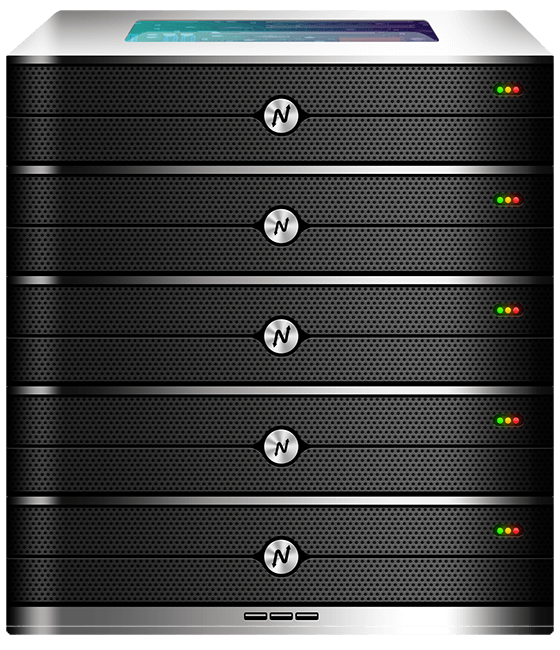Keeping a website healthy is an ongoing task, not a one-off project. Web maintenance services ensure your site stays secure, fast, and reliable while you focus on growth. For global businesses and agencies, choosing maintenance that pairs with robust infrastructure matters. India’s data centers now offer cost-effective performance, low latency across Asia, strong security standards, and elastic scalability — making Indian-hosted maintenance an excellent choice for international sites. In this guide you will learn practical steps to choose, implement, and scale reliable web maintenance services, plus clear examples and hosting recommendations tailored to real business needs.
What are Web Maintenance Services and Why They Matter
Web maintenance services cover the routine and technical tasks required to keep a website operating smoothly. This includes software updates, security patches, backups, performance optimization, uptime monitoring, content updates, and technical support.
On a basic level, maintenance prevents downtime, protects customer data, and preserves SEO rankings. On a strategic level, it keeps the site ready for marketing campaigns and traffic spikes. Good web maintenance services reduce long-term costs by avoiding emergency fixes and costly reputation damage.
Choosing a provider that understands both infrastructure and application layers is essential. When maintenance is paired with a strong hosting platform, response times improve and problems are resolved faster — which is why many businesses choose Indian infrastructure for its favorable balance of price and performance.

How to Choose the Right Web Maintenance Services
Selecting the right web maintenance services starts with a clear inventory of needs. Break this down into four categories: security, uptime, performance, and content management.
First, identify your platform: WordPress sites will need plugin and theme updates, database optimizations, and managed WordPress hosting features. For custom apps, you’ll need OS-level patching, dependency management, and container or VM maintenance.
Second, decide support level. Basic plans cover updates and backups. Advanced plans include 24/7 monitoring, threat remediation, and on-demand developer hours. Match the support SLA to your business impact — eCommerce needs faster response times than a brochure website.
Third, check for automation and reporting. The best web maintenance services provide scheduled backups, change logs, and monthly performance reports so you can verify ROI.
Finally, consider infrastructure synergy. A maintenance provider working with nearby data centers reduces latency for regional users and shortens troubleshooting cycles. If you host with a provider like XenaxCloud, you can combine managed maintenance with optimized Indian-hosted servers for better value and performance.
Recommended plans from XenaxCloud depend on scale: entry sites can start with Shared Hosting Silver — 1 Website, 15GB Storage, 100GB Bandwidth, $1.79, while growing websites should evaluate KVM VPS 2 — 4 Vcore CPU, 16GB RAM, 50GB Storage, 4TB Bandwidth, $10.79 for dedicated resources.
Core Components of Effective Web Maintenance Services
A comprehensive web maintenance services package typically includes:
- Security Maintenance: Regular patching, malware scans, firewall rules, and DDoS mitigation. Security maintenance minimizes breach risks and protects user data.
- Backup and Recovery: Automated backups with offsite retention and a tested restore process. This ensures business continuity after failures.
- Performance Optimization: Caching, image optimization, database cleaning, and CDN configuration. These tasks lower page load times and improve UX.
- Update Management: Safe plugin, theme, and core updates performed in a staging environment before production. This prevents compatibility issues.
- Monitoring and Alerting: Uptime checks, error logging, and real-time alerts that notify engineers before problems affect users.
- Content & SEO Maintenance: Minor content updates, schema checks, and crawl error fixes to protect search rankings.
Each component should be configured for your technology stack, from managed WordPress hosting to custom VPS environments. Providers that combine these services with strong hosting options make routine maintenance more reliable and cost-effective.
Speed, Uptime, and Security Advantages of Indian Infrastructure
India’s modern data centers offer several technical and operational advantages that enhance web maintenance services.
Speed and latency improvements come from regional peering and proximity to dense internet populations in Asia. For businesses with audiences in India, Southeast Asia, and the Middle East, Indian hosting reduces round-trip time and provides snappier interactions.
Uptime is supported by Tier III/Tier IV facilities, redundant network paths, and automated failover systems. When your maintenance provider schedules updates or performs failover tests, robust infrastructure reduces the risk of extended downtime.
Security advantages include local compliance with data protection guidelines and the availability of enterprise security features such as hardware firewalls, private networking, and DDoS protection. These capabilities complement routine maintenance tasks like patching and malware scanning.
For businesses using content management systems, pairing managed WordPress hosting or shared hosting with maintenance services improves both performance and security. For WordPress-specific sites, consider XenaxCloud’s managed options that include preconfigured caching and automatic backups for streamlined maintenance workflows.
- 1 Website
- 10GB SSD Storage
- 100GB Bandwidth
Why Web Maintenance Services Should Include Regular Testing and Staging
A key principle for safe maintenance is the use of staging environments. Staging enables you to apply updates and run functional tests before touching production. This drastically lowers the risk of broken pages or plugin conflicts causing downtime.
Automated test suites check critical user flows like checkout, login, and form submissions. For enterprise sites, add synthetic testing that simulates user journeys from multiple regions. When maintenance includes white-box and black-box tests, you minimize surprises and reduce rollback incidents.
Staging combined with scheduled, documented maintenance windows is the best practice. The maintenance team should communicate windows and expected impact clearly to stakeholders to prevent surprises.
Why Indian Servers Can Handle Global Traffic Efficiently
Modern Indian data centers connect through major internet exchanges and use global CDN integrations. This setup ensures content is served from the nearest edge location while the origin remains in India, providing both regional performance and global reach.
Technical factors that support global traffic include:
- Global CDN integration for cached assets and static files.
- Load balancing and auto-scaling on VPS or cloud layers to absorb traffic spikes.
- Multi-region failover to route traffic if an origin experiences issues.
- Peering agreements that reduce hops between regions.
When web maintenance services are integrated with these capabilities, they can proactively manage cache rules, purge strategies, and failover tests — ensuring international visitors get fast and consistent experiences.
Real-World Use Cases: How Businesses Benefit from Maintenance
E-commerce platforms need constant uptime and secure checkouts. Routine maintenance ensures SSL certificates, payment integrations, and inventory systems remain functional during campaigns.
Agencies managing multiple clients benefit from reseller-style hosting and central maintenance dashboards. With cPanel and WHM, agencies can perform mass updates and maintain consistent security policies across client sites.
Content publishers rely on speed and SEO. Maintenance services focused on caching, image optimization, and broken link checks preserve search rankings and reader engagement.
SaaS businesses running on VPS or dedicated stacks require OS-level patching, container updates, and database tuning. Combining web maintenance services with KVM VPS plans keeps application performance predictable under load.
Each of these cases shows how maintenance protects revenue and reputation by preventing outages and preserving user trust.
Practical Maintenance Checklist for Monthly Tasks
A reliable monthly maintenance schedule includes these tasks:
- Apply OS and CMS updates on staging, test, then deploy to production.
- Run malware scans and review firewall logs.
- Verify backups and perform a test restore.
- Optimize database tables and clear transient caches.
- Review analytics for performance regressions and error spikes.
This checklist helps keep both security and performance on track. Automated tools should handle routine checks, while expert engineers manage exceptions and complex updates.
Comparison: Indian Hosting vs US, Canada, Germany, UAE
India’s hosting stack is competitive in latency for Asia, cost, and operational agility. The table below highlights technical factors to consider for maintenance and global reach.
| Region | Typical Latency to Asia | Support Availability | Provisioning Speed | Redundancy & Uptime |
|---|---|---|---|---|
| India | 20–50ms | 24/7 Regional & Global Support | Fast (minutes to hours) | Enterprise (Tier III/IV) |
| United States | 150–220ms | 24/7 but time-zone biased | Fast (hours) | Enterprise (high) |
| Canada | 160–230ms | Business Hours & Global | Moderate | Enterprise (high) |
| Germany | 140–200ms | Business Hours & Global | Moderate | Enterprise (high) |
| UAE | 70–120ms | Regional Support with Limited Hours | Moderate | Growing (good) |
This comparison focuses on the technical factors that affect maintenance: latency, support windows, provisioning speed for new servers, and redundancy. Indian servers often provide a better balance for Asian and global-facing sites when paired with CDNs and multi-region strategies.
Pricing & Plan Recommendations for Maintenance
When selecting a plan to pair with web maintenance services, match technical needs to resource requirements.
- Small business / Single site: Start with Shared Hosting Silver — 1 Website, 15GB Storage, 100GB Bandwidth, $1.79 for basic updates and monitoring.
- Growing business / Multiple sites: Choose Shared Hosting Gold — 3 Websites, 25GB Storage, 500GB Bandwidth, $2.39 to host multiple projects under one plan with cPanel management.
- Performance-critical / eCommerce or SaaS: Move to KVM VPS 2 — 4 Vcore CPU, 16GB RAM, 50GB Storage, 4TB Bandwidth, $10.79 for dedicated resources and predictable performance.
- Agencies / Resellers: Use Reseller Hosting with cPanel + WHM to centralize maintenance across clients and provide packaged services.
These recommendations aim to reduce maintenance complexity while preserving uptime and performance. For WordPress sites needing specialized care, pair maintenance with managed WordPress hosting to benefit from built-in caching and auto-updates.
For more details on infrastructure options, explore XenaxCloud’s Shared Hosting page. (Internal link: https://xenaxcloud.com/shared-hosting/)
Onboarding and SLA Expectations for Maintenance Contracts
A robust onboarding process should include a security audit, baseline performance report, and agreed maintenance calendar. Service Level Agreements should specify response times, backup retention, and measurable uptime.
Expect transparent reporting and a clear escalation path. If your maintenance provider offers both infrastructure and application-level services, troubleshooting becomes faster because the same team can handle DNS, server, and CMS issues.
FAQ —
What do web maintenance services include?
Web maintenance services include updates, backups, security scans, performance optimization, and monitoring to keep sites reliable and secure.
How often should I schedule web maintenance?
Critical updates and backups should run daily while full maintenance and testing can be scheduled monthly or after major changes.
Can web maintenance services improve SEO?
Yes, by maintaining fast load times, fixing broken links, and ensuring consistent uptime, maintenance helps preserve and improve SEO.
Are web maintenance services expensive for small businesses?
Costs vary, but combining a basic maintenance plan with efficient hosting like shared hosting minimizes expenses for small sites.
How quickly can I scale if traffic grows?
With VPS or KVM plans, scaling can be done within hours; managed maintenance teams help provision and tune resources during growth.
Final Checklist Before You Buy Maintenance
Before buying web maintenance services, confirm these items: backup frequency, restore SLA, update procedure, monitoring coverage, and support hours. Also check if the maintenance provider offers staging and test restores to prevent surprises during updates.
Conclusion
Reliable web maintenance services are essential for protecting revenue, preserving SEO value, and delivering consistent user experiences. Pairing maintenance with modern Indian infrastructure provides exceptional value: cost-effective operations, lower regional latency, strong security, and straightforward scalability. XenaxCloud brings these advantages together with practical maintenance workflows and easy upgrade paths from Shared Hosting Silver to KVM VPS plans.
If you want dependable web maintenance services bundled with powerful hosting, start with Shared Hosting Silver — 1 Website, 15GB Storage, 100GB Bandwidth, $1.79 for basic needs or KVM VPS 2 — 4 Vcore CPU, 16GB RAM, 50GB Storage, 4TB Bandwidth, $10.79 for resource-sensitive sites. XenaxCloud also offers a 15-day money-back guarantee, so you can test maintenance and hosting risk-free.
Ready to protect your website and reduce operational headaches? Choose XenaxCloud for professional web maintenance services and scalable hosting. Check the latest deals on the XenaxCloud Offers Page and get started today: https://xenaxcloud.com/offers






